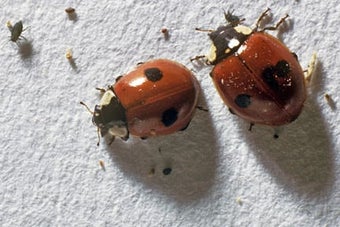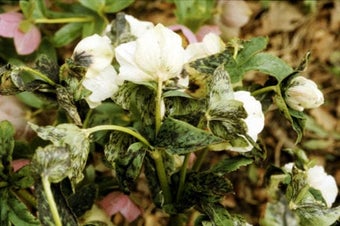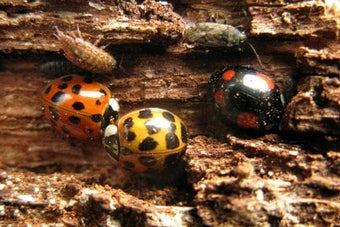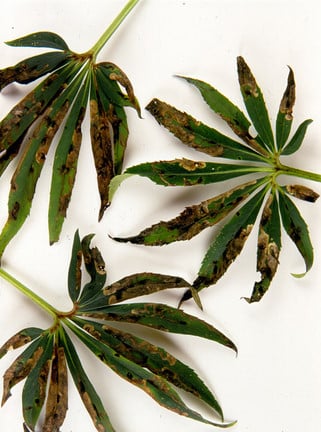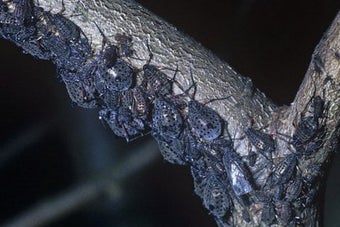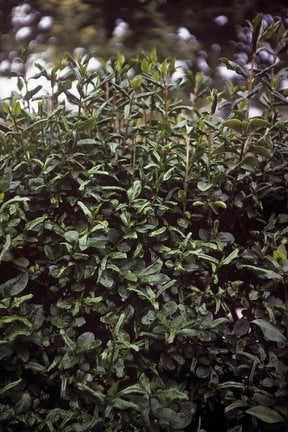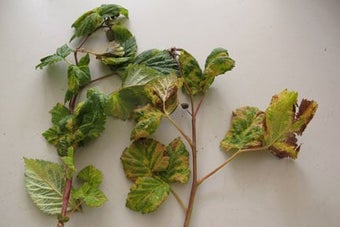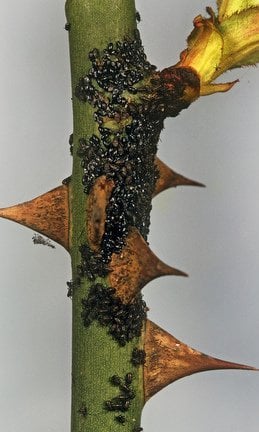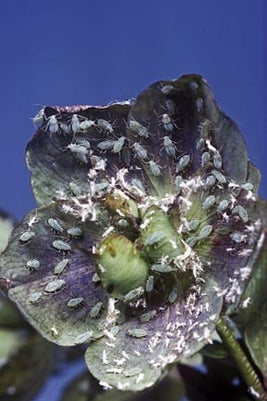
Quick facts
Common names - Hellebore aphid
Scientific names - Macrosiphum hellebori
Plants affected - Hellebores (Helleborus species)
Main symptoms - Whitish green aphids cluster on the flowers and foliage, which is sticky with honeydew excreted by the aphids
Most active - March-April
What is hellebore aphid?
Aphids are -sucking true bugs. They range in size from 1 to 7 mm (¼ in or less) long. Some aphids are known as greenfly or blackfly, but there are species that are yellow, pink, white or mottled. There are more than 500 aphid species in Britain. Some feed on only one or two plant species, but others can be found on a wide range of plant hosts. Many have lifecycles that involve more than one host plant. Almost any plant can be a host to aphids, including ornamentals, vegetables, fruits, greenhouse plants and houseplants. More information on aphids.
Hellebore aphid is whitish green and only found on hellebores it is present throughout the year, although colonies are usually only noticed in spring.
Symptoms
- Whitish-green aphids, 2-4 mm (about 1/8 in) long, sometimes form dense colonies on the underside of hellebore leaves and flowers in early spring
- The sugary honeydew they excrete can lead to the growth of on the foliage
- This species of aphid is only found on hellebores
Management
Aphids form the basis of many food chains and it is not unusual to have some of these animals in a healthy balanced garden ecosystem. On , aphids can be considered part of the they support; natural enemies will normally reduce numbers before summer.
- Where possible tolerate populations of aphids
- Check hellebores frequently from spring onwards so action can be taken before a damaging population has developed
- Use finger and thumb to squash aphid colonies where practical
- Encourage aphid predators in the garden, such as ladybirds, ground beetles, hoverflies, parasitoid wasps and earwigs. Be aware that in spring aphid populations often build up before natural enemies are active in sufficient numbers and then give good control
Biology
Although hellebore aphid can be present on hellebores all year round, noticeable populations usually only occur in early spring at flowering time. It is possible this aphid may also be responsible for spreading the virus disease known as hellebore black death.

